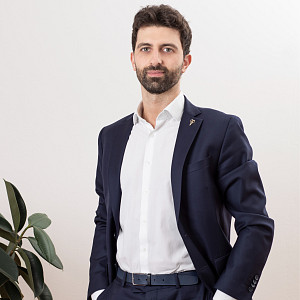Obnova staré školy ve Všechovicích
Kristína Veselá
student
FAST VUT - Faculty of Civil Engineering, Brno University of Technology, Department of Architecture
Czech Republic
Architecture
The concept of the project was the revitalization of the former school in Všechovice, located in the village square at the very heart of the municipality. From… more

Roberto Zanini
advisor
Universita IUAV di Venezia
Italy
quality architecture that is born from the place, from the study of the site, the flows, the… more
This project presents a thoughtful and well-balanced approach to revitalizing a historic landmark while introducing contemporary architectural elements. The sensitive restoration of the original building, combined with the modern glass and concrete annex, creates a harmonious dialogue between past and present that respects the village’s cultural heritage. The careful spatial program—integrating community functions, administration, and exhibition spaces—ensures the building remains a vibrant and functional hub for both residents and visitors.
I would also like to compliment the exceptional quality of the physical model and the graphic representation. The plastico beautifully captures the relationship between the old and new structures and effectively communicates the project's integration within its urban context. The clarity and elegance of the drawings and renderings greatly enhance the overall presentation, helping to convey both the technical and aesthetic qualities of the design.
The elegant contrast in façade materials, along with the open, airy interior palette, enhances the building’s welcoming atmosphere. Technically, the independent structural system of the annex with an expansion joint shows a clear commitment to preserving the historic fabric while allowing modern interventions. Overall, the project successfully balances heritage conservation, modern architecture, and community needs in a way that can serve as an inspiring model for similar revitalizations.
Here are some suggestions of similar projects that share a thoughtful approach to heritage revitalization combined with modern interventions and community functions:
The Tate Modern, London (Herzog & de Meuron)
This iconic project transformed a former power station into a contemporary art museum, skillfully blending industrial heritage with new architectural elements. Like your project, it maintains a strong connection to its historic fabric while creating vibrant new public spaces.
The Zeitz Museum of Contemporary Art Africa (OMA), Cape Town
The adaptive reuse of a grain silo into a museum uses clever spatial strategies to preserve historic structure while inserting modern design features. The project creates dynamic cultural spaces that engage the community, much like your multi-functional center.
The Neues Museum, Berlin (David Chipperfield Architects)
A sensitive restoration project that carefully reinterprets historic architecture with modern interventions. It balances conservation with functionality, bringing new life to a damaged historic building while respecting its past.
The CaixaForum Madrid (Herzog & de Meuron)
A former power station converted into a cultural center, with striking contrast between old brick façades and new modern additions, hosting diverse cultural activities and public programs.
The Sainsbury Laboratory, Cambridge (Edward Cullinan Architects)
While more focused on research, this project demonstrates how combining historical context with modern, light-filled architecture can create inviting, functional spaces that foster community and knowledge exchange.
Suggestion: Exploring these projects may provide further inspiration for integrating historical preservation with contemporary design, especially in terms of material choices, spatial layout, and the relationship between old and new volumes. Additionally, focusing on high-quality physical models and graphic presentations as you’ve done—greatly helps communicate these complex ideas effectively to stakeholders and the public.
22.06.2025


